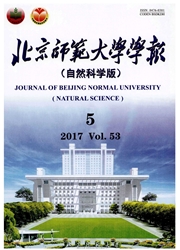

 中文摘要:
中文摘要:
本文分析了塔里木河下游2个不同林龄柽柳(Tamarix spp)根系的构型参数,以了解柽柳对干旱的适应策略.结果表明:1)柽柳的根系拓扑结构受生境和林龄的不同而存在差异,表现为四年生柽柳的根系分支模式接近叉状分支,一年生柽柳根系的分支更趋于鱼尾形分支,且远离积水区一年生柽柳根系的拓扑指数较近积水区一年生柽柳大,根系分枝更简单,表明一年生柽柳在受到水分胁迫时会通过降低根系分支来适应干旱.2)不同生境、林龄的柽柳均表现出长的根系连接长度,但远离积水区较近积水区的一年生柽柳根系连接长度有增加趋势,表明干旱可以促使一年生柽柳根系伸长生长.3)较小的总分支率是柽柳根系的分支特点.一年生柽柳和四年生柽柳根系的分支率存在差异,一年生柽柳较小的主根分支和较大的逐级分支率有助于资源的获取速率和促进主根的向下生长.四年生柽柳主根分支较丰富,逐级分支率由主根向低级根逐级减小,一方面可以满足柽柳对资源的需要,同时通过长的连接长度可以避免根系的重叠和根系间资源的竞争.
 英文摘要:
英文摘要:
The root architecture of Tamarix spp in the lower reaches of the Tarim River was analyzed to investigate ecological adaptation strategies of Tamarix spp during drought.Root topological architecture showed two branch patterns:dichotomous branching in four-year-old and fishtail branching in one-year-old forests.Root topological index of one-year-old Tamarix spp far away from water was larger,simpler than those closer to water,therefore one-year-old Tamarix spp reduces root branch after adaptation to drought. Drought promotes root elongation in one-year-old Tamarix spp Low branching rate was a major branching characteristics of Tamarix spp There was significant difference in branching rates between one-and four-year-old Tamarix spp.The lower main root branch and larger gradual branching rate contribute to high efficiency of resource utilization,promote down-growth of main root.For four-year-old Tamarix spp ,branches of main root were abundant and gradual branching rate showed a decreasing trend with decreased root grade,this will help to provide resources and avoid overlapping and resource competition among roots.
 同期刊论文项目
同期刊论文项目
 同项目期刊论文
同项目期刊论文
 期刊信息
期刊信息
